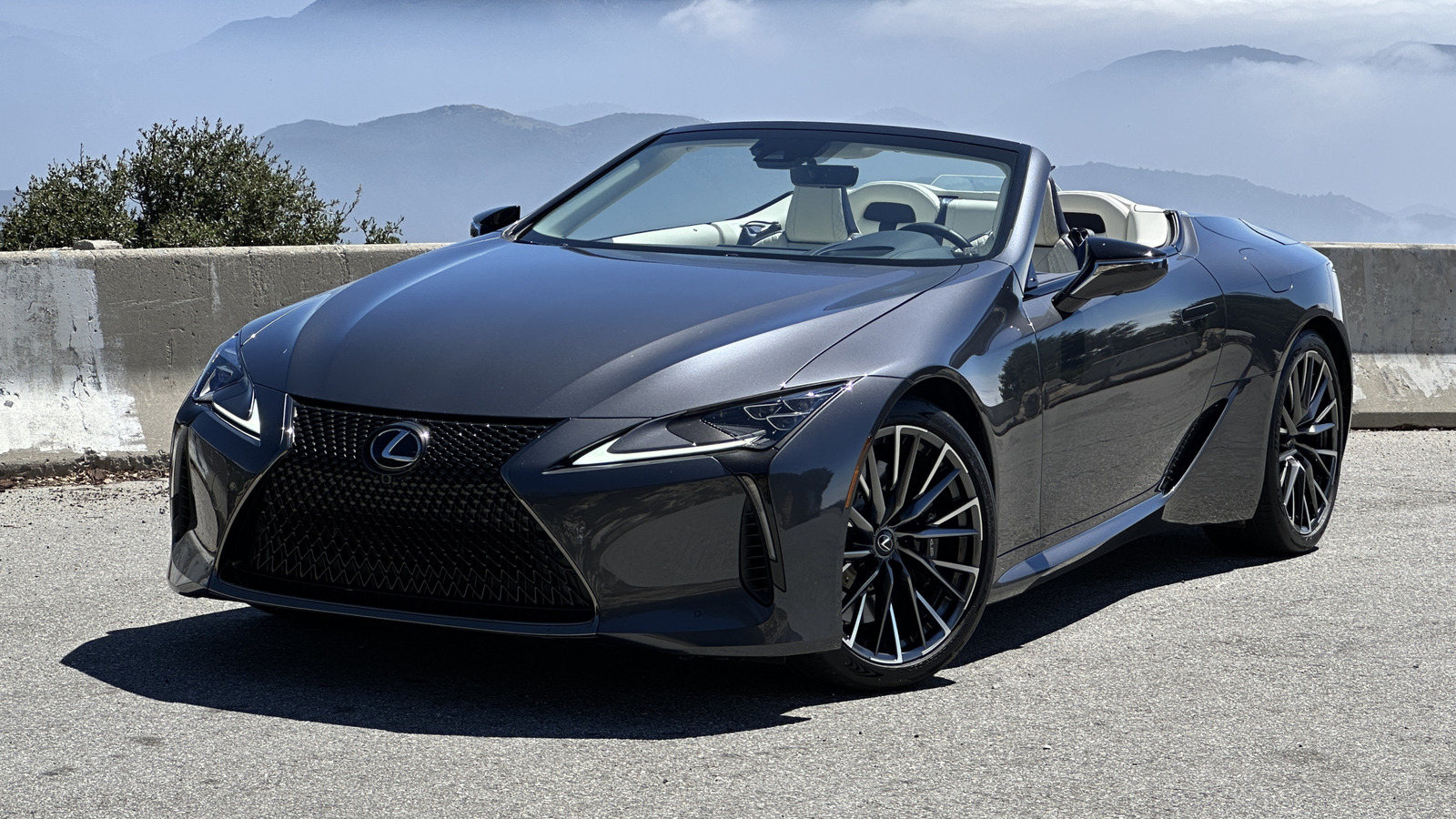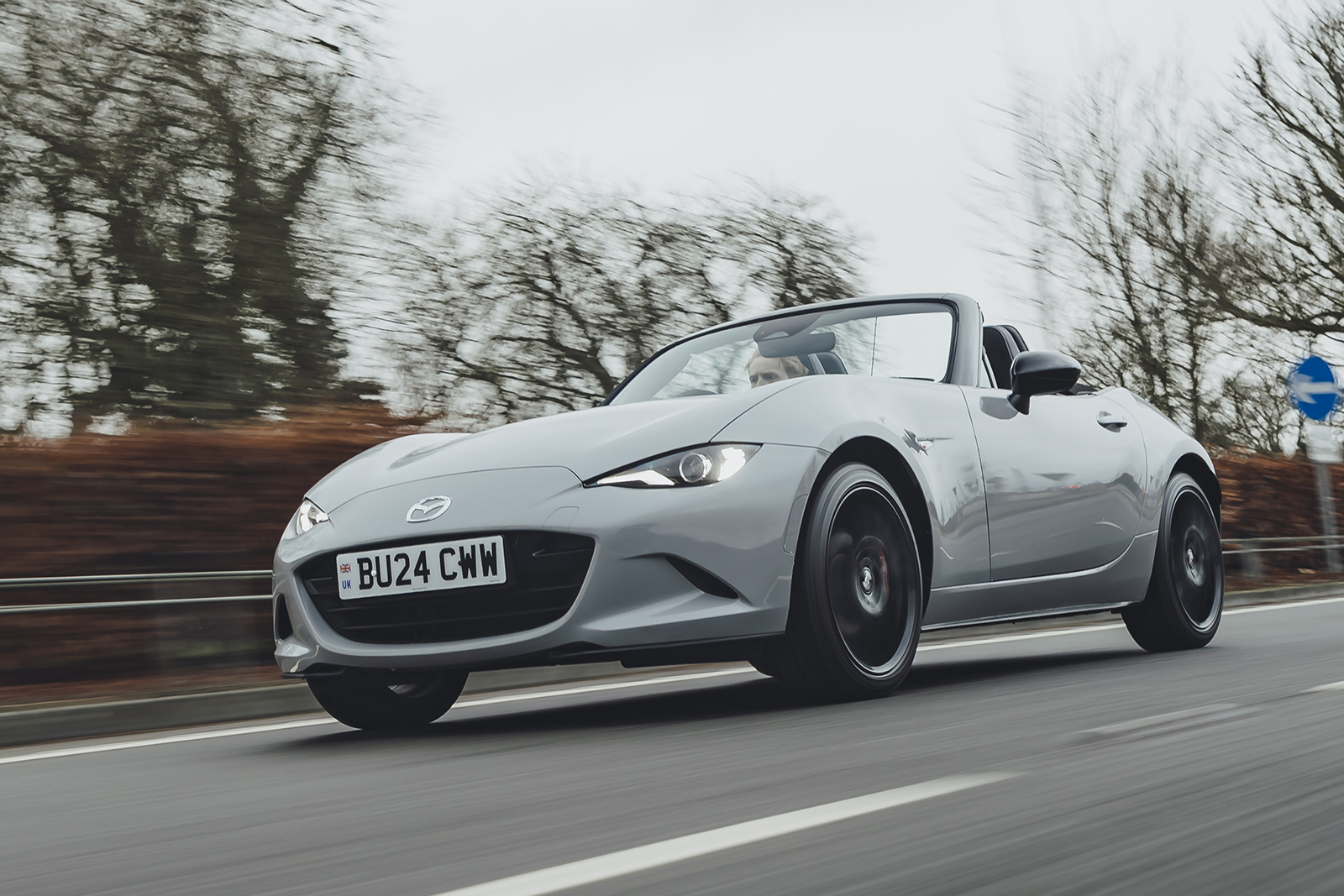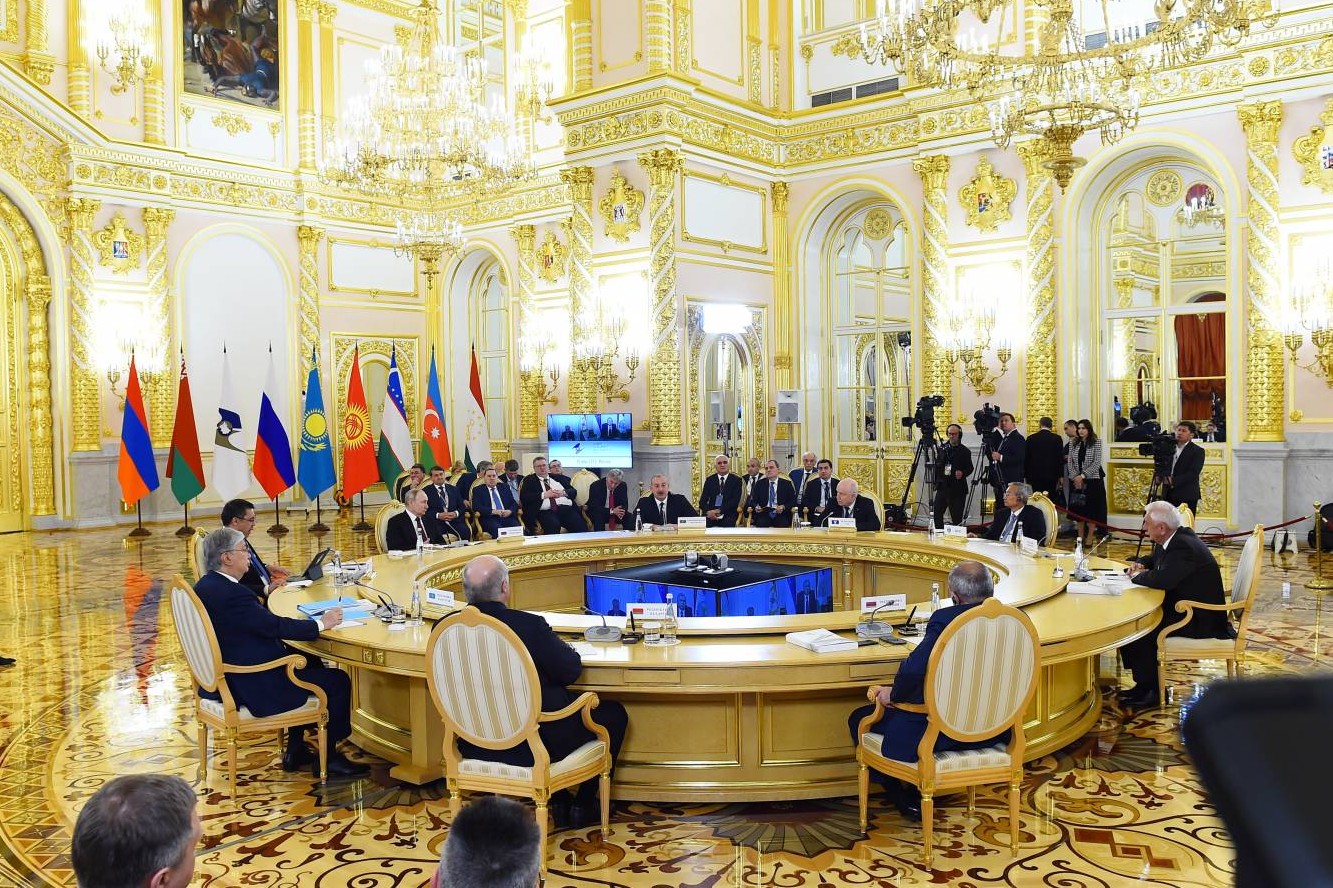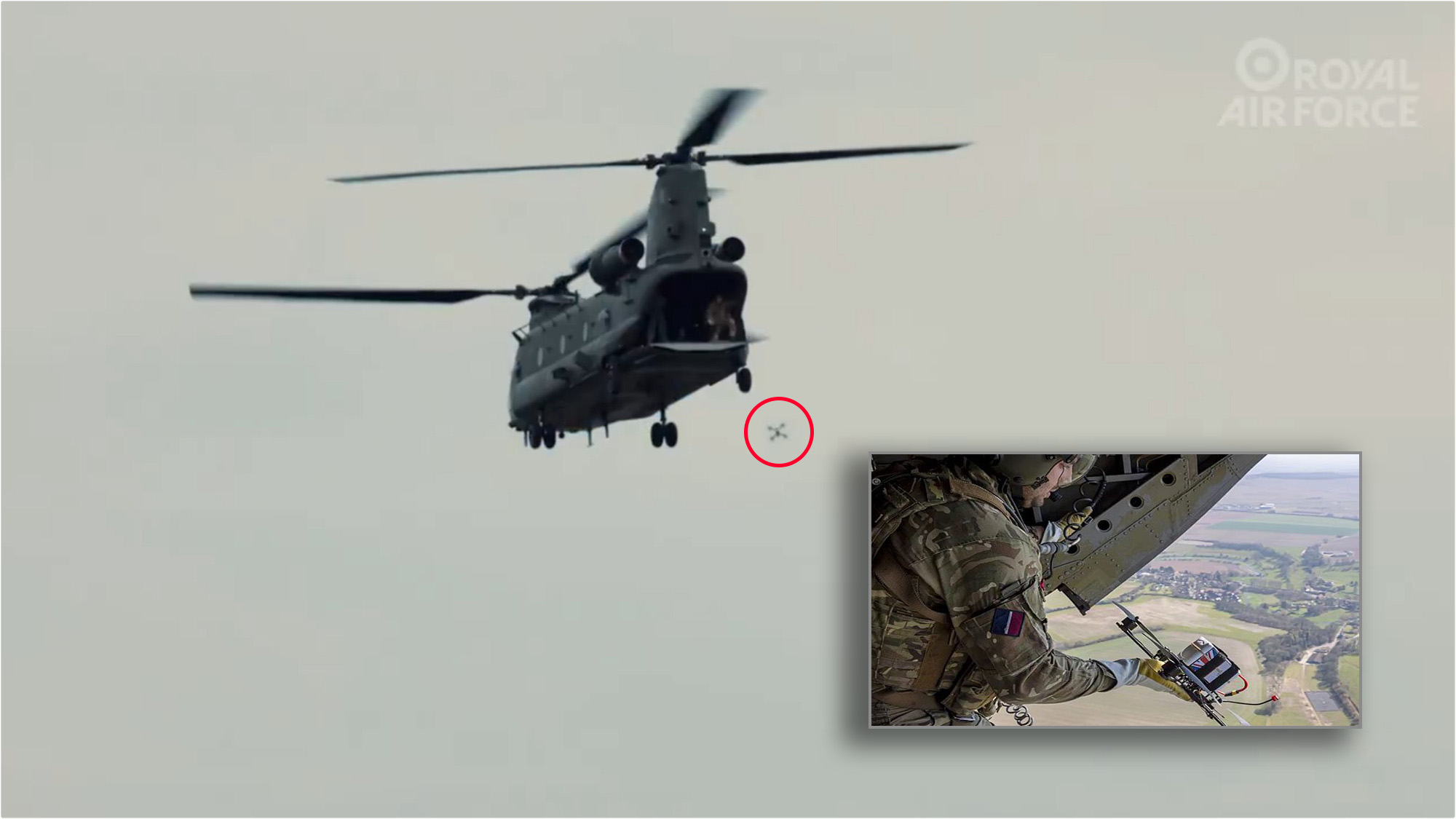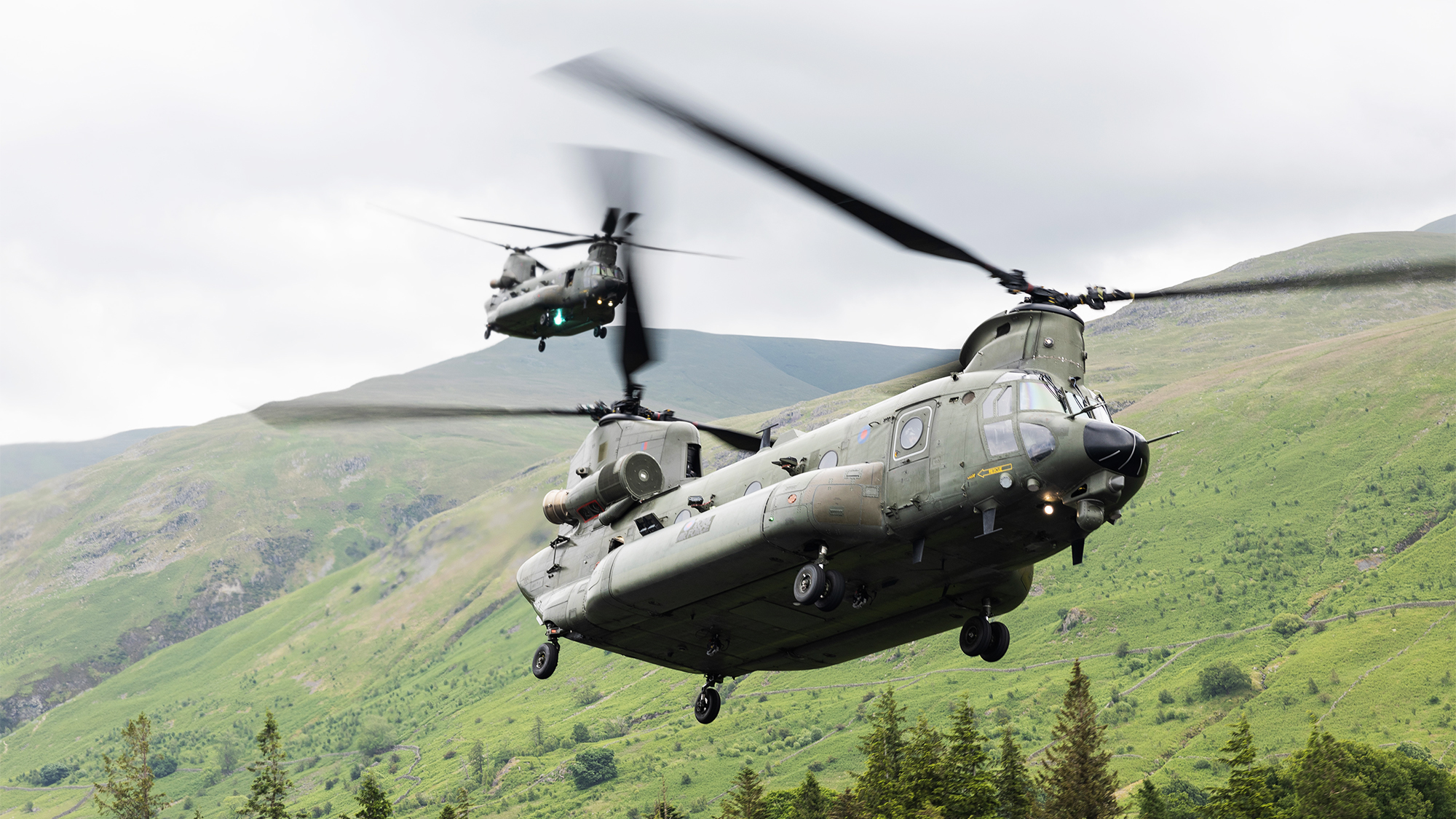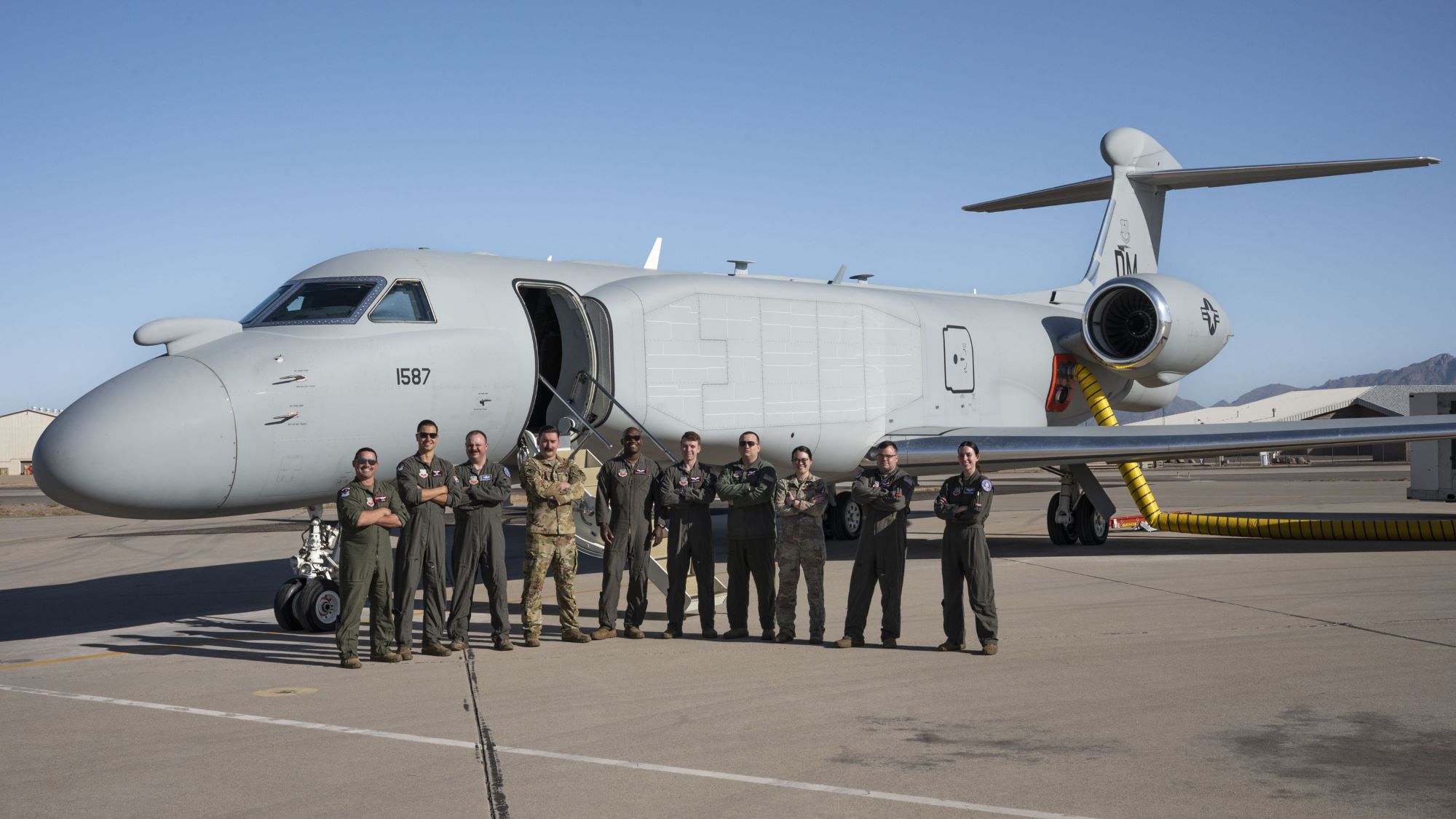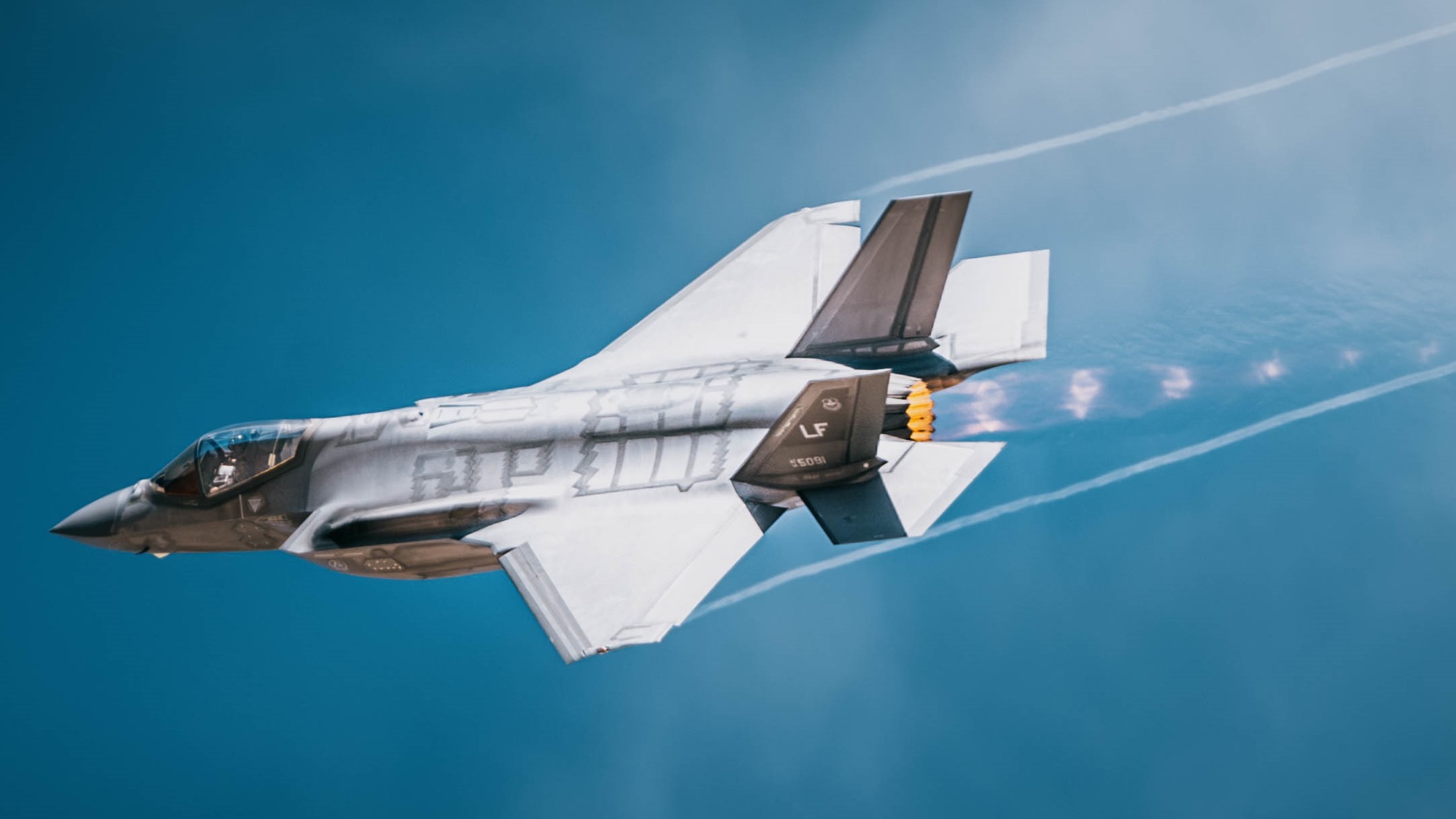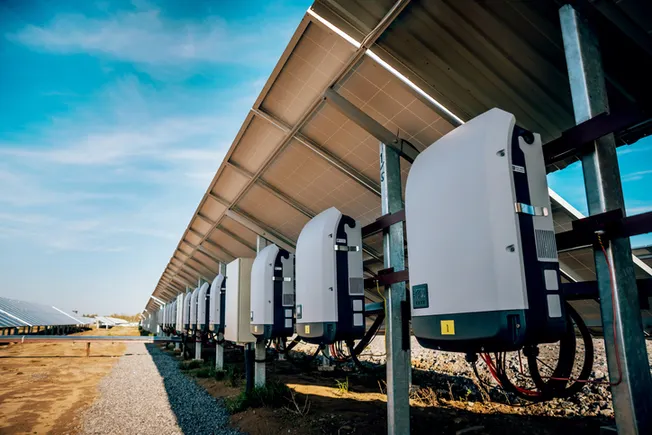The D Brief: New jets announced; Border-ops funding shift; Putin’s no-show; Europe’s trillion-dollar problem; And a bit more.
Trump calls for “F-55” and “F-22 Super” aircraft: During his multi-day trip to the Middle East, President Trump pitched two new U.S. military jets while standing beside top U.S. aerospace executives Thursday in Qatar. “One of the things that, for the people that reach us in the military, I asked to look into, the F-35,” Trump told his audience in Doha. “We’re doing an upgrade, a simple upgrade, but we’re also doing an F-55. I’m going to call it an F-55, and that’s going to be a substantial upgrade, but it’s going to be also with two engines, because the F-35 has a single engine. I don’t like single engines,” the president said. “Even this man [GE Aerospace CEO Larry Culp], he’s the best in the world at engines, but on occasion, I know you won’t admit this, if an engine goes out it’s nice to have two, three or four engines. That’s why I like the 747, it’s got four. Today they’re getting very big and, as a little more cost saving, they’re getting two very, very big ones. No matter how good, you know, they tell me, Larry, the engine will never go out. Well, I think it goes out on occasion fairly rarely. “We’re going to do an F-55 and I think, if we get the right price, we have to get the right price, that will be two engines, and a super upgrade on the F-35 and then we’re going to do the F-22,” the president continued. “I think the most beautiful fighter jet in the world is the F-22, but we’re going to do an F-22 Super, and it will be a very modern version of the F-22 fighter jet.” Context: The F-22 was made by Lockheed Martin, which recently lost its bid to build the Air Force’s sixth-generation F-47 fighter, was cut from the Navy’s own stealth-jet competition, and has said it is now looking at ways to “supercharge” its F-35. Among the skeptics is the Aviationist’s Stefano D’Urso. If Trump’s remarks are true, he wrote Thursday, it would amount to “a substantial upgrade over the F-35 as it would require an extensive re-design of the airframe to be able to host two engines, and that is highly unlikely given the complexity and costs involved. The other option would be an alternative engine, something that has already been discussed in the past,” but was abandoned as too costly. There are already upgrades planned for the two aircraft, including “the F-35’s Block 4/Technology Refresh 3 upgrade and the F-22’s ongoing upgrades to keep it in tip-top shape until the F-47 NGAD is operational.” Additional reading: “Trump's Qatari 747 may need fighter escorts to serve as Air Force One.” Reuters reports on the latest on the U.S. president’s controversial plan to accept a gigantic gift from the country’s ruling family. Trump also visited U.S. troops at Qatar’s Al-Udeid Air Base Thursday, where he hailed a Qatari pledge to invest $10 billion in upgrades, Reuters reports. Just before he arrived, U.S. comedian Theo Von told racist jokes that drew groans from the uniformed audience, according to the Associated Press. Now the president is in the UAE for the final leg of his Mideast trip. There Trump visited the Sheikh Zayed Grand Mosque, the country’s largest, with UAE President Mohammed bin Zayed Al Nahyan. AP calls it “an important symbol of national identity”; the country’s founder, Sheikh Zayed, “is buried in the mosque’s main courtyard.” Update: The $142 billion Saudi arms deal Trump announced Wednesday in Riyadh might not be all that, analyst Byron Callan of Capital Alpha Partners wrote (PDF) with a bit of historical context on Wednesday. “There were no specifics on what KSA would buy or when, and there is precedent for a similar announcement in 2017 that was not as dramatic as the total amount announced,” said Callan. Still, with an estimated $946 billion in total Saudi defense spending planned through 2035, “It might not be unreasonable to assume that the U.S. takes 15% of that total,” which would amount to about $142 billion. Also: U.S. military weapons exports are the focus of a hearing before the Senate Armed Services Committee this morning. No one from the Defense or State Departments is attending; but former Deputy Under Secretary of Defense for Industrial Policy William Greenwalt has been called up, as well as Keith Webster of the Defense and Aerospace Council, and Lisa Saum-Manning of RAND. That began at 9:30 a.m. ET. Livestream here. Additional reading: “How Qatar Spent Billions to Gain Influence in the U.S.,” the Wall Street Journal reported Thursday; “Israeli military strikes kill scores in Gaza as Trump visits the region,” Reuters reported Thursday; “Trump says the US and Iran have ‘sort of’ agreed on the terms for a nuclear deal,” the Associated Press reported Thursday from Doha; Welcome to this Thursday edition of The D Brief, a newsletter dedicated to developments affecting the future of U.S. national security, brought to you by Ben Watson and Bradley Peniston. Share your tips and feedback here. And if you’re not already subscribed, you can do that here. On this day in 197
“We’re doing an upgrade, a simple upgrade, but we’re also doing an F-55. I’m going to call it an F-55, and that’s going to be a substantial upgrade, but it’s going to be also with two engines, because the F-35 has a single engine. I don’t like single engines,” the president said. “Even this man [GE Aerospace CEO Larry Culp], he’s the best in the world at engines, but on occasion, I know you won’t admit this, if an engine goes out it’s nice to have two, three or four engines. That’s why I like the 747, it’s got four. Today they’re getting very big and, as a little more cost saving, they’re getting two very, very big ones. No matter how good, you know, they tell me, Larry, the engine will never go out. Well, I think it goes out on occasion fairly rarely.
“We’re going to do an F-55 and I think, if we get the right price, we have to get the right price, that will be two engines, and a super upgrade on the F-35 and then we’re going to do the F-22,” the president continued. “I think the most beautiful fighter jet in the world is the F-22, but we’re going to do an F-22 Super, and it will be a very modern version of the F-22 fighter jet.”
Context: The F-22 was made by Lockheed Martin, which recently lost its bid to build the Air Force’s sixth-generation F-47 fighter, was cut from the Navy’s own stealth-jet competition, and has said it is now looking at ways to “supercharge” its F-35.
Among the skeptics is the Aviationist’s Stefano D’Urso. If Trump’s remarks are true, he wrote Thursday, it would amount to “a substantial upgrade over the F-35 as it would require an extensive re-design of the airframe to be able to host two engines, and that is highly unlikely given the complexity and costs involved. The other option would be an alternative engine, something that has already been discussed in the past,” but was abandoned as too costly.
There are already upgrades planned for the two aircraft, including “the F-35’s Block 4/Technology Refresh 3 upgrade and the F-22’s ongoing upgrades to keep it in tip-top shape until the F-47 NGAD is operational.”
Additional reading:
- “Trump's Qatari 747 may need fighter escorts to serve as Air Force One.” Reuters reports on the latest on the U.S. president’s controversial plan to accept a gigantic gift from the country’s ruling family.
Trump also visited U.S. troops at Qatar’s Al-Udeid Air Base Thursday, where he hailed a Qatari pledge to invest $10 billion in upgrades, Reuters reports. Just before he arrived, U.S. comedian Theo Von told racist jokes that drew groans from the uniformed audience, according to the Associated Press.
Now the president is in the UAE for the final leg of his Mideast trip. There Trump visited the Sheikh Zayed Grand Mosque, the country’s largest, with UAE President Mohammed bin Zayed Al Nahyan. AP calls it “an important symbol of national identity”; the country’s founder, Sheikh Zayed, “is buried in the mosque’s main courtyard.”
Update: The $142 billion Saudi arms deal Trump announced Wednesday in Riyadh might not be all that, analyst Byron Callan of Capital Alpha Partners wrote (PDF) with a bit of historical context on Wednesday. “There were no specifics on what KSA would buy or when, and there is precedent for a similar announcement in 2017 that was not as dramatic as the total amount announced,” said Callan.
Still, with an estimated $946 billion in total Saudi defense spending planned through 2035, “It might not be unreasonable to assume that the U.S. takes 15% of that total,” which would amount to about $142 billion.
Also: U.S. military weapons exports are the focus of a hearing before the Senate Armed Services Committee this morning. No one from the Defense or State Departments is attending; but former Deputy Under Secretary of Defense for Industrial Policy William Greenwalt has been called up, as well as Keith Webster of the Defense and Aerospace Council, and Lisa Saum-Manning of RAND. That began at 9:30 a.m. ET. Livestream here.
Additional reading:
- “How Qatar Spent Billions to Gain Influence in the U.S.,” the Wall Street Journal reported Thursday;
- “Israeli military strikes kill scores in Gaza as Trump visits the region,” Reuters reported Thursday;
- “Trump says the US and Iran have ‘sort of’ agreed on the terms for a nuclear deal,” the Associated Press reported Thursday from Doha;
Welcome to this Thursday edition of The D Brief, a newsletter dedicated to developments affecting the future of U.S. national security, brought to you by Ben Watson and Bradley Peniston. Share your tips and feedback here. And if you’re not already subscribed, you can do that here. On this day in 1970, Anna Mae Hays and Elizabeth P. Hoisington became the U.S. Army’s first female generals in the service’s history.
Around the Defense Department
Hegseth’s $1.4 billion redirect for border ops: A draft plan from Trump’s Pentagon would redirect more than $1.4 billion for military operations along the southern border, Politico reported Tuesday. The pitch comes as Defense Secretary Pete Hegseth’s team adheres to a 12-month continuing resolution, which extends through March.
The money would be shifted from priorities like base repairs, troop-relocation costs, and service members’ pay and benefits. A similar approach was implemented during Trump’s first term for the purpose of building his border wall, which was never completed.
Notable: “The Pentagon may also submit further proposals to move some of the $848 billion lawmakers allocated the department for the stopgap,” Politico’s Robbie Gramer and Joe Gould report, and emphasize details within the plan could still change.
Developing: Trump’s Homeland Security Department wants more than 20,000 National Guard troops to help crackdown on immigrants, the New York Times reported Thursday. “It was unclear what role state National Guard members would play and whether they would be involved in rounding up people for deportation,” a defense official told the Times.
The Guard has never been used in this capacity before, and many questions are still unanswered about how the plan could proceed. A bit more, here.
Pacific multidomain task forces are looking for long-range drones. Uncrewed ISR aircraft that can fly long distances in stormy Pacific weather are at the top of the wishlist for the 3rd Multi-Domain Task Force, which is now part of the Army’s rapid experimentation and fielding “Transformation in Contact” program, Defense One’s Meghann Myers reports from AUSA’s Land Forces Pacific symposium in Honolulu.
Also: “Army prepping for Pacific conflict with prepositioned equipment, logistics hubs,” Myers adds from Hawaii.
Developing: Senators call for Starlink investigation. “We ask that you investigate whether the Trump Administration is intervening to benefit Starlink, which is owned by Elon Musk, as it negotiates tariff agreements and other matters with foreign governments,” wrote seven Democratic senators in a Wednesday letter to U.S. Attorney General Pam Bondi and other Trump administration officials.
Background: The letter cited a May 7 Washington Post report that “‘U.S. embassies and the State Department have pushed nations to clear hurdles for U.S. satellite companies, often mentioning Starlink by name,’ and often in the context of trade negotiations. These reports indicate that Mr. Musk may be using his official role and his proximity to the President as leverage for his own personal financial benefit—even if it comes at the expense of American consumers and the nation’s foreign policy interests.” Read the letter (PDF), here.
Additional reading:
- “Former National Guardsman allegedly plotted ISIS-inspired attack on Michigan military facility,” ABC News reported Wednesday;
- And ICYMI, “Pentagon considers shifting Greenland to US Northern Command, sparking concerns over Trump’s ambitions for the territory,” CNN reported last week.
The future of Ukraine and Europe
Putin was a no-show for peace talks with Ukraine on Thursday. Despite Ukraine’s president announcing his attendance in advance, the Kremlin spent several days avoiding the question of whether or not leader Vladimir Putin would attend the planned talks in Istanbul. On Thursday, Russian officials confirmed Putin would not attend, and dispatched aides and deputy ministers to Istanbul instead. Reuters referred to them as a “second-tier team of negotiators.”
“Theater props” is how Ukraine’s president described the aides Putin sent. “We all know who makes the decisions in Russia,” President Volodymir Zelenskyy said Thursday in Turkey. Ukrainian officials, he said, don’t know if Putin’s proxies “are able to decide on anything,” much less the future of Kyiv and its invaded territories.
Even so, Zelensky dispatched his Defense Minister Rustem Umerov to Istanbul for talks with Russian officials. Their goal is “to attempt at least the first steps toward de-escalation, the first steps toward ending the war—namely, a ceasefire,” Zelenskyy said.
“Today, Russia once again demonstrated that it does not intend to end the war,” Zelensky wrote on social media after visiting with Turkish President Recep Erdogan. “Moreover, such a Russian approach is a sign of disrespect—toward the world and all partners. We expect a clear and strong response from partners,” he said.
Trump reax: “Nothing's going to happen until Putin and I get together,” he told reporters Thursday.
Lastly: It would likely take Europe 25 years and a trillion dollars to replace the U.S. military presence on the continent, should the U.S. withdraw after forging a ceasefire between Ukraine and Russia. That’s according to a new analysis from the International Institute for Strategic Studies, published Thursday.
In the meantime, “Russia could be in a position to pose a significant military challenge to NATO allies, particularly the Baltic states, as early as 2027,” the authors conclude. “By then, Russia’s ground forces could mirror its February 2022 active equipment holdings through a combination of refurbishment and the production of new systems.”
For America’s European allies, “To fill certain gaps more quickly, buying abroad will thus remain necessary, specifically in areas where at present there is little to no European option available, such as rocket artillery or low-observable fighter aircraft,” IISS writes. “European allies will also need to prioritise investments in systems capable of attacking Russia’s anti-access capabilities to reduce vulnerabilities quickly.” Continue reading, here.
Related reading:
- Commentary: “Ukraine Is a US Strategic Asset—Don’t Lose It,” former US Ambassador to Poland Paul Jones writes Thursday at the Center for European Policy Analysis;
- “Netherlands agrees to buy at least 46 Leopard 2A8 tanks from KNDS,” Reuters reported Wednesday from Amsterdam;
- And “Germany aims to have 'strongest' military in Europe,” DW reported from Chancellor Friedrich Merz’s first major speech in parliament on Wednesday.










